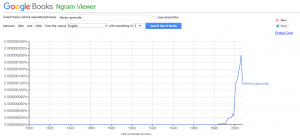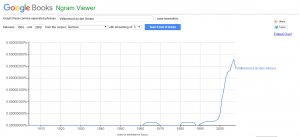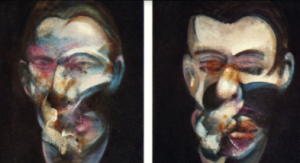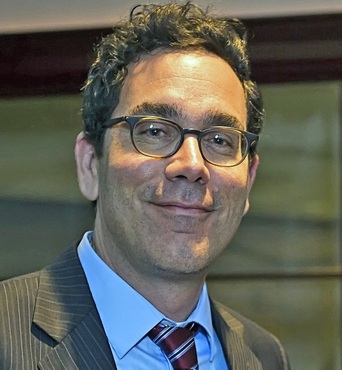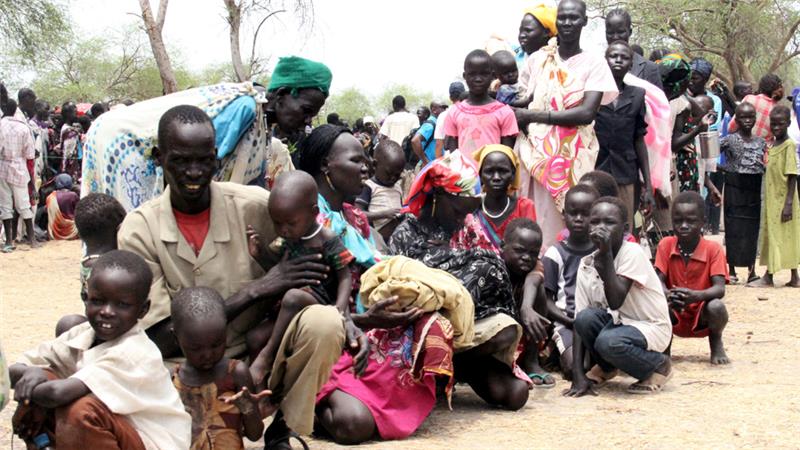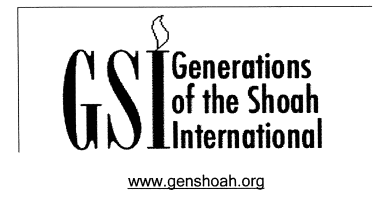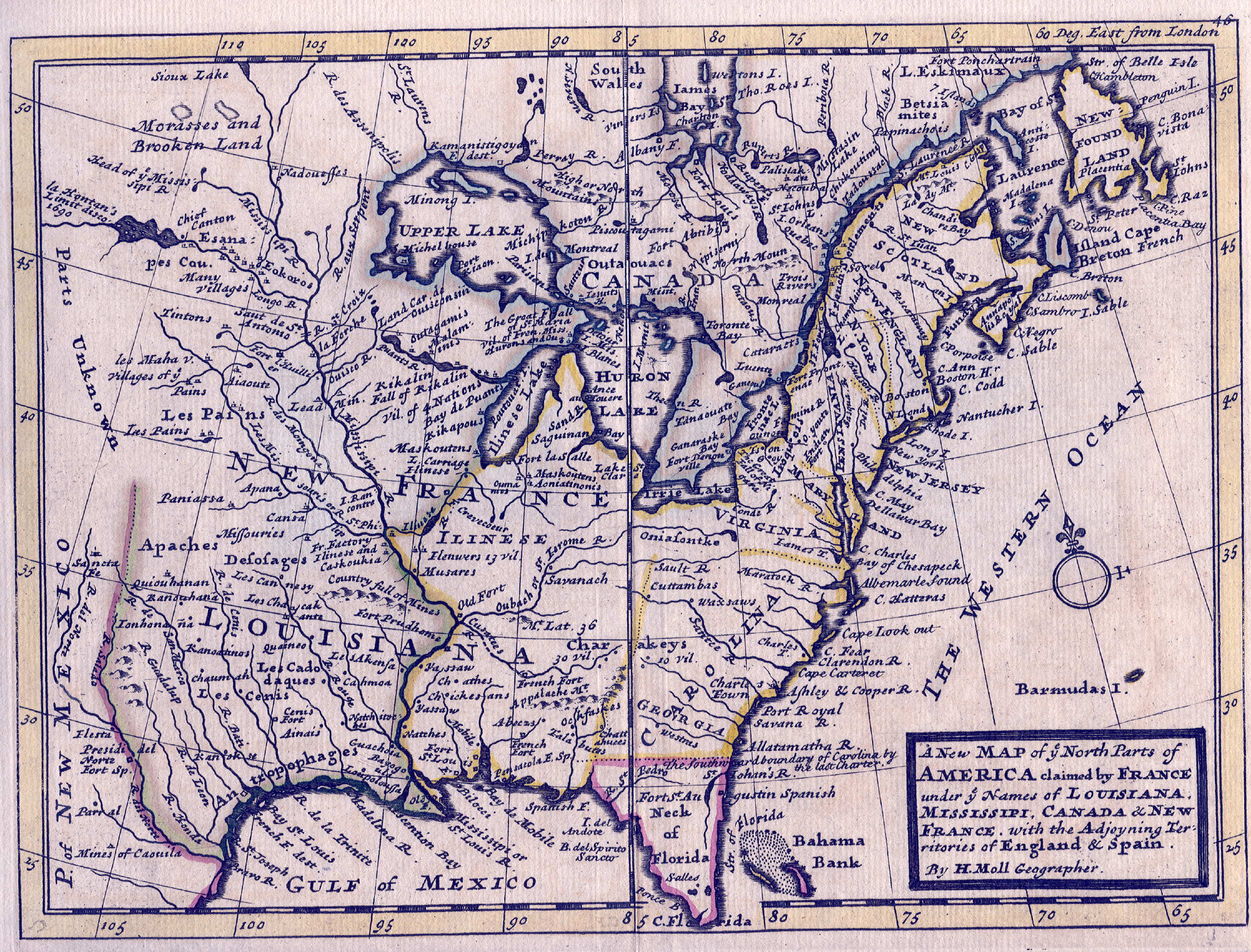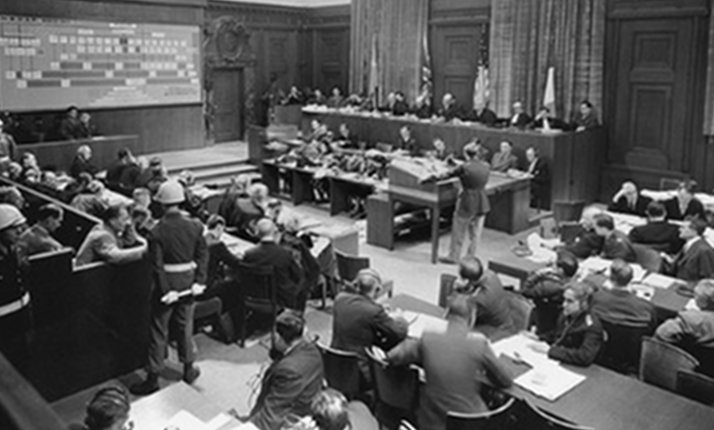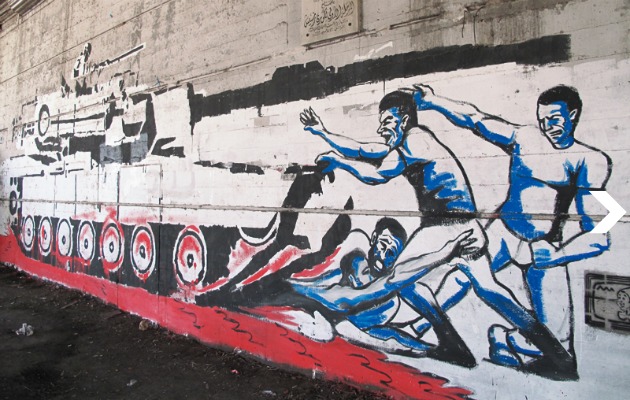Since the 1990s there has been a virtual academic consensus that a genocide was perpetuated by Germany during the Herero and Nama War. But the question of responsibility and continuity are still being debated.
In the last two decades, the Herero and the Nama have sought justice, recognition and reparations from the German government for the genocide they endured at the beginning of the 20th century. Recently, they have taken their struggle to an American court, which started hearing their case a few weeks ago. The German government officially referred to the 1904-1907 events as a “genocide” only recently (in 2016) and still refrains from dealing with who was responsibility and rejects calls for reparation. Instead, Germany has attempted reconciliation through other channels, such as providing aid to the Namibian government and returning victim remains that were stored in Germany after the genocide.
The historiography of German colonialism and Namibian history has witnessed fierce debate regarding the events that took place in Southwest African between 1904-1907. Still today, some historical questions remain. This short essay will try to identify the main debated issues of this genocide and will highlight the most important ideas of the historians who have researched this subject.
What have Historians Discussed?
Historiographical discourse about the genocide only began in the 1960s in East Germany, where archives as well as political motivations facilitated academic interest in German colonialism. The meager academic occupation with the war was still evident in the 1980s, when American historian Jon Bridgman stated that “this war has, in a little more than two generations, disappeared from history”.[1] Nevertheless, the scholarship of the genocide has surged since the 1990s. The ongoing historical debate about the roots of the Holocaust, most prominently around the argument for a German ‘special path’ (Sonderweg), as well as the independence of Namibia (1990) and the 100th commemoration of the war (2004), all contributed to the increasing interest in the genocide. The Herero and Nama War was now described as “the first German Genocide,”[2] “the first anti-partisan war in the history of the German Army,”[3] and “the first German attempt to establish a racial state.”[4] These epithets mirror the transformation of the genocide into a key issue, even a milestone, within the broader history of Germany.
It is important to note that the historical writing about the genocide has mostly been done by German scholars based on German sources. With few expectations, most of these scholars unfortunately largely ignored the perspectives of the Herero and the Nama.
In the last few decades, historians have been engaged with three key questions. The first question is the debate whether the Herero and Nama War qualifies as a genocide (and not, say, a typical, though quite ruthless, colonial war). The second question revolves around the motivations for the genocidal violence and the importance of the ideas that stood behind it. Strongly related to this is the issue of the genocide’s inevitability, and its place within the broader history of Germany. The third question regards the responsibility for the genocide, and is crucial for the current claim for reparations.
First Debate: Was the Herero and Nama War a genocide?
Since the 1960’s, main-stream historiography tended to accept that a genocide was perpetrated during the war, notwithstanding some debate about this issue at the end of the 1980’s and the beginning of the 1990’s.
The first historian to provide a comprehensive research on the genocide was Drechsler in his 1966 monograph Südwestafrika unter Deutscher Kolonialherrschaft: Der Kampf der Herero und Nama gegen den deutschen Imperialismus.[5] Drechsler was the first scholar to claim that the German army perpetrated a genocide (then a relatively recent term coined by Rephael Lemkin in 1944) during the war, and that its atrocities were far more brutal than previously believed. German policies and motivations, coupled with the high death rate, are proof that the events were tantamount to genocide. Drechsler claimed that although a surprise, the war was aligned with the colonial goals of Germany, and enabled the colonialists to use it as an excuse to fulfill their greedy and power-hungry ambitions. Drechsler pointed out that the groups who benefited the most from the war were the big corporations, land and shipping companies, and war-related industries. Drechsler’s work fitted in the East-German criticism of West-Germany and capitalism in general, drawing a connecting line between Imperial capitalism, the Third Reich and the West-German Federal Republic.
Even if Drechsler’s Marxist agenda was at times looked upon with suspicion, his conclusion that the war entailed a genocide was a historiographical breakthrough, adopted by Western historians and remained widely accepted in the academic community today. This virtual academic consensus supported the U.N. decision to declare as early as 1985 that the “German massacre of the Herero in 1904” qualifies as a genocide, and therefore as the first genocide of the 20th century.[6]
The most significant challenge for this consensus appeared in the second half of the 1980s. In 1985, anthropologist Karla Poewe claimed that the language of extermination used by the military leadership during the war was part of a psychological war, and did not reflect authentic genocidal intent.[7] In 1989, Brigitte Lau, a German-Namibian historian, published an essay that rejected the now widely accepted claim that the Germans perpetrated genocide during the war.[8] Lau argued that the historians of the war viewed it through an Europocentric lens, for example by describing the Herero and the Nama as helpless natives, and the German army as supposedly undefeated. Lau doubted the number of victims calculated by Drechsler and others, and noted that most of the relevant documents about the war were lost during WWI.
Lau’s essay evoked a fierce reaction among scholars, who responded with a new wave of publications that aspired to reaffirm the common historiographical stance about the genocide.[9] The challenge posed by Lau and others, thus, was beneficial for developing and complicating the analysis of the genocidal nature of the war. Scholars paid growing attention to the question of genocidal intent and planning, the use of genocidal discourse, collective responsibility and the participation of the state’s apparatuses in the killing. The solid evidence to support the genocidal nature of the war was summarized, clarified, rethought and refined, and ultimately weakened the revisionary claims of Poewe and Lau, whose arguments were now marginalized and widely denounced.
Second Debate: What were the motivations behind the genocide? Was the context local and specific, or broad, systematic and embedded in German/European culture?
This question can be divided to two. The first is about the specific reasons that led Germany to conduct a genocide in Southwest Africa. While it is virtually agreed that both ideological and military-realistic aspects existed in the background of the genocide, different scholars have tended to emphasize one over the other. Some scholars stressed the prominent weight of racist beliefs among the architects of the genocide, mostly General Lothar von Trotha and Field-Marshal Alfred von Schlieffen, as well as the genocidal tendencies of the German administration and settlers in Southwest Africa. Conversely, other scholars have accentuated the military and realistic sides of the genocide. These scholars claim that the genocide was not pre-planned and the racist views, albeit prevalent, were secondary within the strategic and tactical war policies. Instead, the genocide was caused by the escalation and radicalization of the German military campaign, that happened largely because of the difficulty and frustration of fighting a guerilla war without the right theory or experience to do so. A recent contribution to this argument is the work of Susanne Kuss. Kuss compared the Herero and Nama War to two other German colonial conflicts that were fought in the first decade of the 20th century – The “Boxer Rebellion” and the Maji-Maji War. These two conflicts, though violent and brutal, did not end up as a genocide. By comparing these three cases, Kuss argues that German colonial military policy depended mostly on local circumstances, and the genocide in Southwest Africa was a result of “the collapse of a carefully planned orthodox military strategy” and not a deliberated intent.[10]
The second issue within this debate about the motives behind the genocide relates to the place of the genocide within the broader history of Germany. This question has been a platform for a heated scholarly debate in the last two decades. The proponents of placing the war within the framework of German historical continuity focus on highlighting the war’s influences on and links with later parts of German history, i.e., the First World War, the rise of Nazism, the Second World War and the Holocaust. One of the leading scholars to argue for continuity is Jürgen Zimmerer, who published in 2011 a monograph named From Windhoek to Auschwitz. Zimmerer claimed that the genocide committed in Southwest Africa marks a historical turning point from ‘traditional’ colonial massacres, committed largely by local or private actors, to state-organized, centrally-planned and bureaucratized mass killings, such as those perpetrated in the Holocaust. Zimmerer stressed the immense importance of ideological precedents that emerged during the war, such as the realization of the previously-fantasized race war and the post-war establishment of a ruling system based on social engineering and ethnic hierarchies, which potentially enabled a foundation for a racial utopia.[11]
Another perspective on the continuity of German history is provided by Isabel Hull. Hull emphasizes German-Prussian military thought as the main reason for the radicalization of violence during the war.[12] She demonstrated how the immense independence of the German Military within the decision-making process in the Empire and its free access to the Kaiser, were crucial factors for the unfolding genocide. By doing so, Hull has put the onus on German militarism, rather than German racism, and thus highlighted the war’s links to the First World War, rather than Nazism or the Second World War.
On the other hand, some scholars have questioned the claim that the genocide represents a German peculiarity, pointing out to the broader imperial and settler-colonial context. Some claimed that the local and regional contexts of an asymmetric war conducted in a settler colony were more relevant than the German peculiar system. For instance, one of the first West-German scholars of the genocide, Helmut Bley, asserted that “South-West Africa offers many parallels to development in other European colonies, and in its outline German expansion followed a well-established pattern of colonial growth.”[13]
Others pointed out that the genocide was not significant in Nazi thought, and that there was a stark difference between the Herero and Nama genocide and the Holocaust. Birthe Kundrus, for instance, argued that “the way from Windhoek to Nürnberg was far, very far.”[14] Parallelism between the Herero and Nama genocide and the Jewish Holocaust is methodologically dangerous, since it may reduce German colonialism “to a mere precursor of National Socialism.”[15] She claimed that European antisemitism and colonial racism have different roots and attributes, and they are two distinct experiences.
Third Debate: Who was responsible for the genocide?
Even though most scholarship agrees on the fact that genocide happened in Southwest Africa, the question of who to blame is still highly debated. Was annihilation mostly a personal initiative of the military commander in charge, General Lothar von Trotha? And by extension – was it a military initiative independent of, and even defying, the German political leadership? Or, on the contrary, the military policy was only an execution of political orders or – at least – mindset?
Most historians agree that either way, General von Trotha’s role was extremely significant to the unfolding of the genocide. It is also agreed that German military high command favored, or at least did not actively oppose, von Trotha’s tactics. It is also commonplace that the German government in Berlin and the administration in Southwest Africa had reservations about the genocidal violence, but the stances of the Kaiser, Wilhelm II, are still contested.
The evidence is ambiguous. On the one hand, it was the political authority that ordered to halt the extermination policy conducted by von Trotha and supported to a large degree by the German military high command in Berlin. There were also strong voices in the German government, the colonial administration and among German settlers that vehemently opposed the mass killings, and blamed von Trotha personally.
On the other hand, as mentioned, von Trotha had the support of high officials in Berlin, and claimed that the Kaiser himself gave him the green light to suppress the Herero revolt by any means. Scholar Jeremy Sarkin elaborated on the issue of the preexisting genocidal intent, and claimed that the orders for genocide were given to von Trotha by Wilhelm II before the former was sent to the colony.[16] Sarkin was criticized for basing his argument on scant material and overinterpretation, but his claim is significant as it raises the question of responsibility and therefore contributes to the present debate about reparations.
In addition, as Bley contended, the second phase of the genocide which included mass confinement in concentration and labor camps was mostly committed by civil authorities and not by the German military.
Conclusion: New Directions?
The scholarship about the Herero and Nama War has evolved and grown in the last two decades. Memory of the war has not disappeared as was claimed in the 1980’s. Yet, many aspects of the war still require a better scholarly focus.
First, there are still some more “classic” issues which have not yet been explored. Biographies, especially full scale and academic ones, of the main figures behind the war are still rare. Comprehensive biographies of Lothar von Trotha or Hendrik Witbooi are warranted.
Second, some historical groups still have not received appropriate attention. Especially the victims. Only two significant works were published about the Herero and only one about the Nama. The German settlers, a prominent group during and after the genocide, hardly received designated focus by scholars, who tend to focus on the German authorities and institutions. The role of the settlers in the genocide is crucial, since it is intimately connected to the question of responsibility. In addition, the role of other indigenous groups, such as the Ovambo, during the genocide are also largely unexplored.
Furthermore, granting the war and Southwest Africa in general more global as well as local perspective is necessary. The war has been well researched vis-à-vis the German metropole, and is well-placed within the framework of German history. Nevertheless, it was hardly put in the global context. Comparative research is still very limited, and the war was not fully positioned within the broader history of Settler Colonialism as well as the history of global colonial wars. The war is also required to be examined in relation to the local histories of Southern Africa and Namibia specifically. Scholarship has yet to examine the war’s long term, post-German implications on the balance of power in the broader Namibian society, as well as the influence of the war on other societies in the region, native and European alike.
Asher Lubotzky is a PhD student in the History Department at the University of Indiana, focusing on Africa
——–
[1] Jon Bridgman, The Revolt of the Hereros, Los Angeles, CA, University of California Press, 1981: p. 1. More than a decade later, Bridgman’s statement was criticized by Gesine Krüger for his disregard of the Herero memory. Krüger, pp. 14-15.
[2] Gesine Krüger, Kriegsbewältigung Und Geschichtsbewusstsein, Göttingen, Vandenhoeck & Ruprecht, 1999: p. 7.
[3] Walter Nuhn, Feind überall: Der Grosse Nama-aufstand (hottentottenaufstand) 1904-1908 In Deutsch-südwestafrika (namibia): Der Erste Partisanenkrieg In Der Geschichte Der Deutschen Armee, Bonn, Bernard & Graefe, 2000.
[4] Jürgen Zimmerer, Von Windhuk nach Auschwitz?, Berlin, Lit, 2011: p. 23.
[5] Horst Drechsler, Südwestafrika unter Deutscher Kolonialherrschaft: Der Kampf der Herero und Nama gegen den deutschen Imperialismus (1884 – 1915), Berlin, Akad. -Verlag, 1966.
[6] See paragraph 24 of the UN Whitaker Report, 1985: “UN Whitaker Report on Genocide, 1985, paragraphs 14 to 24, pages 5 to 10”, <http://www.preventgenocide.org/prevent/UNdocs/whitaker/section5.htm#p17> [accessed 10 December, 2017].
[7] Karla Poewe, The Namibian Herero: a History of the Psychosocial Disintegration and Survival, New York, E. Mellen Press, 1985. Poewe relied on a questionable publication by Gert Sudholt which appeared in 1975, and has been since harshly criticized by most of the experts of German colonialism.
[8] Brigitte Lau, “Uncertain Certainties. The Herero–German War of 1904”, Mibagus, 2 (1989).
[9] See for example: Tilman Dedering, “The German-Herero War of 1904: Revisionism of Genocide or Imaginary Historiography?”, Journal of Southern African Studies, Vol. 19, No. 1 (1993): pp. 80-88; Werner Hillebrecht, “‘Certain Uncertainties’ or Venturing Progressively into Colonial Apologetics?”, Journal of Namibian Studies, 1 (2007): pp. 73-95.
[10]Susanne Kuss, German Colonial Wars and the Context of Military Violence, Cambridge, Massachusetts, Harvard University Press, 2017. p. 4.
[11] Jürgen Zimmerer, Von Windhuk nach Auschwitz?, Berlin, Lit, 2011.
[12] Isabel Hull, Absolute Destruction, Ithaca, NY, Cornell University Press, 2005.
[13] Ibid: p. xvii.
[14] Kundrus, Phantasiereiche: p. 126.
[15] Kundrus, “From the Herero to the Holocaust”: p. 300.
[16] J. Sarkin, Germany’s Genocide of the Herero: Kaiser Wilhelm II, his General, his Settlers, his Soldiers, Woodbridge, Currey, 2011.

